Opinion & Analysis
Wishon: The best way to fit lie angle

The higher the loft on the clubhead, the more critical it is to be dynamically fit for the correct lie angle. It is also important, however, to have the lie correctly fit for the fairway woods and hybrids to ensure solid impact consistency.
For the driver, lie angle is less of an accuracy issue due to its lower loft, but if the toe of the driver is severely up in the air in the address position — due to how the length chosen affects the set up of the lie for the golfer — the driver lie should definitely be fit to the golfer if for no other reason than confidence and psychological reasons.
Recent studies and observations have shown that the technique where an ink line is drawn on the back of the ball is better for dynamic lie fitting than using a lie board with tape on the sole of the iron. Plus the ink-line technique can also be done while hitting shots from normal mown grass lies so as to avoid having to hit the club down into a hard surface lie board, a practice which does bother some golfers and cause them to possibly swing differently than they do when hitting shots off grass.
The ink line on the back of the ball technique for dynamic lie fitting is simple and logical. A heavy ink line is drawn on the ball with a Sharpie pen. The ball is placed on the ground with the line vertical and facing the clubhead. After impact, a faint image of the ink line is transferred to the clubface. If the line is perfectly vertical on the clubface, the lie of the club is correct for the golfer. If the ink line tilts in an angle up toward the toe side of the face, the lie of the club that was hit is too upright so the correct lie has to be flatter than the lie of the club being hit. Vice versa — if the ink line angles up toward the heel side of the face, the correct lie has to be more upright than the lie of the test club.
In the near future, kits for this technique of dynamic lie fitting will become available that will include face labels with graduated lines to make the determination of the correct lie much easier and more definitive.
For the highest level of accuracy, dynamic lie fitting should be done as the last procedure in the fitting, using a test club(s) that possess every one of the golfer’s determined fitting specs for the clubhead model, length, shaft, swing weight (MOI) and grip size. In lieu of this, a test club for proper dynamic lie evaluation should at least have the length, shaft and swing weight that is found best for the golfer.
In an ideal world, the dynamic lie test should be done with each one of the golfer’s clubs. Obviously, this will take a good bit more time to do. As such, if time becomes an issue, it is OK to perform the dynamic lie test with every other club or even every third club, with the lies of the in-between irons calculated from the actual dynamic lies determined by each test club.
Related
- What length should your clubs be?
- What lofts should your clubs be?
- Face angle is crucial for a proper fitting
- The best way to fit lie angle
- How to choose the right club head design
- Tom Wishon’s keys to set makeup
- Getting the right size grip, time after time
- What shaft weight should you play?
- What swing weight should your clubs be?
- What shaft flex should I use?
This story is part of a 10-part series from Tom Wishon on professional club fitting.
Opinion & Analysis
The 2 primary challenges golf equipment companies face

As the editor-in-chief of this website and an observer of the GolfWRX forums and other online golf equipment discourse for over a decade, I’m pretty well attuned to the grunts and grumbles of a significant portion of the golf equipment purchasing spectrum. And before you accuse me of lording above all in some digital ivory tower, I’d like to offer that I worked at golf courses (public and private) for years prior to picking up my pen, so I’m well-versed in the non-degenerate golf equipment consumers out there. I touched (green)grass (retail)!
Complaints about the ills of and related to the OEMs usually follow some version of: Product cycles are too short for real innovation, tour equipment isn’t the same as retail (which is largely not true, by the way), too much is invested in marketing and not enough in R&D, top staffer X hasn’t even put the new driver in play, so it’s obviously not superior to the previous generation, prices are too high, and on and on.
Without digging into the merits of any of these claims, which I believe are mostly red herrings, I’d like to bring into view of our rangefinder what I believe to be the two primary difficulties golf equipment companies face.
One: As Terry Koehler, back when he was the CEO of Ben Hogan, told me at the time of the Ft Worth irons launch, if you can’t regularly hit the golf ball in a coin-sized area in the middle of the face, there’s not a ton that iron technology can do for you. Now, this is less true now with respect to irons than when he said it, and is less and less true by degrees as the clubs get larger (utilities, fairways, hybrids, drivers), but there remains a great deal of golf equipment truth in that statement. Think about it — which is to say, in TL;DR fashion, get lessons from a qualified instructor who will teach you about the fundamentals of repeatable impact and how the golf swing works, not just offer band-aid fixes. If you can’t repeatably deliver the golf club to the golf ball in something resembling the manner it was designed for, how can you expect to be getting the most out of the club — put another way, the maximum value from your investment?
Similarly, game improvement equipment can only improve your game if you game it. In other words, get fit for the clubs you ought to be playing rather than filling the bag with the ones you wish you could hit or used to be able to hit. Of course, don’t do this if you don’t care about performance and just want to hit a forged blade while playing off an 18 handicap. That’s absolutely fine. There were plenty of members in clubs back in the day playing Hogan Apex or Mizuno MP-32 irons who had no business doing so from a ballstriking standpoint, but they enjoyed their look, feel, and complementary qualities to their Gatsby hats and cashmere sweaters. Do what brings you a measure of joy in this maddening game.
Now, the second issue. This is not a plea for non-conforming equipment; rather, it is a statement of fact. USGA/R&A limits on every facet of golf equipment are detrimental to golf equipment manufacturers. Sure, you know this, but do you think about it as it applies to almost every element of equipment? A 500cc driver would be inherently more forgiving than a 460cc, as one with a COR measurement in excess of 0.83. 50-inch shafts. Box grooves. And on and on.
Would fewer regulations be objectively bad for the game? Would this erode its soul? Fortunately, that’s beside the point of this exercise, which is merely to point out the facts. The fact, in this case, is that equipment restrictions and regulations are the slaughterbench of an abundance of innovation in the golf equipment space. Is this for the best? Well, now I’ve asked the question twice and might as well give a partial response, I guess my answer to that would be, “It depends on what type of golf you’re playing and who you’re playing it with.”
For my part, I don’t mind embarrassing myself with vintage blades and persimmons chasing after the quasi-spiritual elevation of a well-struck shot, but that’s just me. Plenty of folks don’t give a damn if their grooves are conforming. Plenty of folks think the folks in Liberty Corner ought to add a prison to the museum for such offences. And those are just a few of the considerations for the amateur game — which doesn’t get inside the gallery ropes of the pro game…
Different strokes in the game of golf, in my humble opinion.
Anyway, I believe equipment company engineers are genuinely trying to build better equipment year over year. The marketing departments are trying to find ways to make this equipment appeal to the broadest segment of the golf market possible. All of this against (1) the backdrop of — at least for now — firm product cycles. And golfers who, with their ~15 average handicap (men), for the most part, are not striping the golf ball like Tiger in his prime and seem to have less and less time year over year to practice and improve. (2) Regulations that massively restrict what they’re able to do…
That’s the landscape as I see it and the real headwinds for golf equipment companies. No doubt, there’s more I haven’t considered, but I think the previous is a better — and better faith — point of departure when formulating any serious commentary on the golf equipment world than some of the more cynical and conspiratorial takes I hear.
Agree? Disagree? Think I’m worthy of an Adam Hadwin-esque security guard tackle? Let me know in the comments.
@golfoncbs The infamous Adam Hadwin tackle ? #golf #fyp #canada #pgatour #adamhadwin ? Ghibli-style nostalgic waltz – MaSssuguMusic
Podcasts
Fore Love of Golf: Introducing a new club concept

Episode #16 brings us Cliff McKinney. Cliff is the founder of Old Charlie Golf Club, a new club, and concept, to be built in the Florida panhandle. The model is quite interesting and aims to make great, private golf more affordable. We hope you enjoy the show!
Opinion & Analysis
On Scottie Scheffler wondering ‘What’s the point of winning?’

Last week, I came across a reel from BBC Sport on Instagram featuring Scottie Scheffler speaking to the media ahead of The Open at Royal Portrush. In it, he shared that he often wonders what the point is of wanting to win tournaments so badly — especially when he knows, deep down, that it doesn’t lead to a truly fulfilling life.
View this post on Instagram
“Is it great to be able to win tournaments and to accomplish the things I have in the game of golf? Yeah, it brings tears to my eyes just to think about it because I’ve literally worked my entire life to be good at this sport,” Scheffler said. “To have that kind of sense of accomplishment, I think, is a pretty cool feeling. To get to live out your dreams is very special, but at the end of the day, I’m not out here to inspire the next generation of golfers. I’m not out here to inspire someone to be the best player in the world, because what’s the point?”
Ironically — or perhaps perfectly — he went on to win the claret jug.
That question — what’s the point of winning? — cuts straight to the heart of the human journey.
As someone who’s spent over two decades in the trenches of professional golf, and in deep study of the mental, emotional, and spiritual dimensions of the game, I see Scottie’s inner conflict as a sign of soul evolution in motion.
I came to golf late. I wasn’t a junior standout or college All-American. At 27, I left a steady corporate job to see if I could be on the PGA Tour starting as a 14-handicap, average-length hitter. Over the years, my journey has been defined less by trophies and more by the relentless effort to navigate the deeply inequitable and gated system of professional golf — an effort that ultimately turned inward and helped me evolve as both a golfer and a person.
One perspective that helped me make sense of this inner dissonance around competition and our culture’s tendency to overvalue winning is the idea of soul evolution.
The University of Virginia’s Division of Perceptual Studies has done extensive research on reincarnation, and Netflix’s Surviving Death (Episode 6) explores the topic, too. Whether you take it literally or metaphorically, the idea that we’re on a long arc of growth — from beginner to sage elder — offers a profound perspective.
If you accept the premise literally, then terms like “young soul” and “old soul” start to hold meaning. However, even if we set the word “soul” aside, it’s easy to see that different levels of life experience produce different worldviews.
Newer souls — or people in earlier stages of their development — may be curious and kind but still lack discernment or depth. There is a naivety, and they don’t yet question as deeply, tending to see things in black and white, partly because certainty feels safer than confronting the unknown.
As we gain more experience, we begin to experiment. We test limits. We chase extreme external goals — sometimes at the expense of health, relationships, or inner peace — still operating from hunger, ambition, and the fragility of the ego.
It’s a necessary stage, but often a turbulent and unfulfilling one.
David Duval fell off the map after reaching World No. 1. Bubba Watson had his own “Is this it?” moment with his caddie, Ted Scott, after winning the Masters.
In Aaron Rodgers: Enigma, reflecting on his 2011 Super Bowl win, Rodgers said:
“Now I’ve accomplished the only thing that I really, really wanted to do in my life. Now what? I was like, ‘Did I aim at the wrong thing? Did I spend too much time thinking about stuff that ultimately doesn’t give you true happiness?’”
Jim Carrey once said, “I think everybody should get rich and famous and do everything they ever dreamed of so they can see that it’s not the answer.”
Eventually, though, something shifts.
We begin to see in shades of gray. Winning, dominating, accumulating—these pursuits lose their shine. The rewards feel more fleeting. Living in a constant state of fight-or-flight makes us feel alive, yes, but not happy and joyful.
Compassion begins to replace ambition. Love, presence, and gratitude become more fulfilling than status, profits, or trophies. We crave balance over burnout. Collaboration over competition. Meaning over metrics.
Interestingly, if we zoom out, we can apply this same model to nations and cultures. Countries, like people, have a collective “soul stage” made up of the individuals within them.
Take the United States, for example. I’d place it as a mid-level soul: highly competitive and deeply driven, but still learning emotional maturity. Still uncomfortable with nuance. Still believing that more is always better. Despite its global wins, the U.S. currently ranks just 23rd in happiness (as of 2025). You might liken it to a gifted teenager—bold, eager, and ambitious, but angsty and still figuring out how to live well and in balance. As much as a parent wants to protect their child, sometimes the child has to make their own mistakes to truly grow.
So when Scottie Scheffler wonders what the point of winning is, I don’t see someone losing strength.
I see someone evolving.
He’s beginning to look beyond the leaderboard. Beyond metrics of success that carry a lower vibration. And yet, in a poetic twist, Scheffler did go on to win The Open. But that only reinforces the point: even at the pinnacle, the question remains. And if more of us in the golf and sports world — and in U.S. culture at large — started asking similar questions, we might discover that the more meaningful trophy isn’t about accumulating or beating others at all costs.
It’s about awakening and evolving to something more than winning could ever promise.




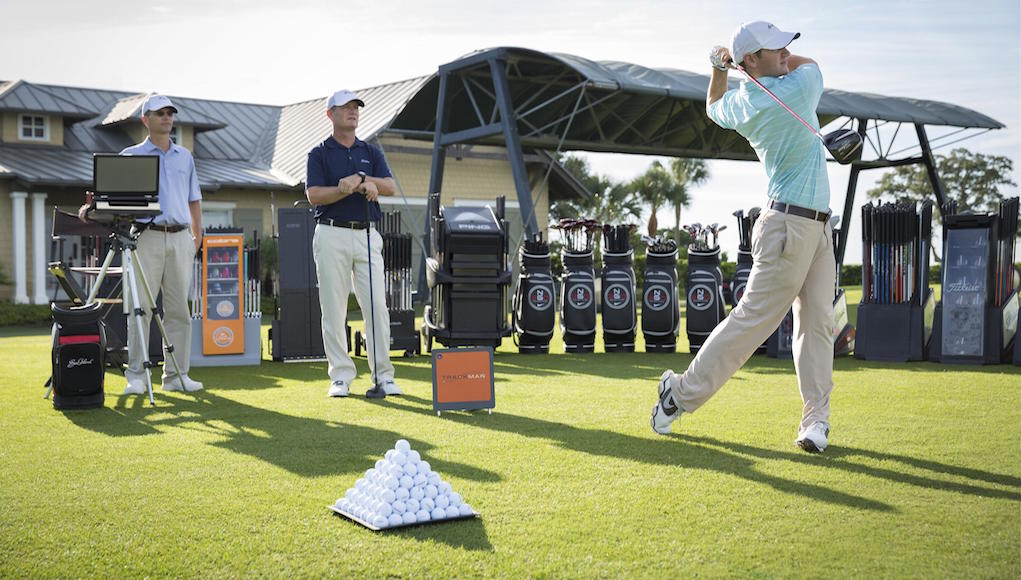
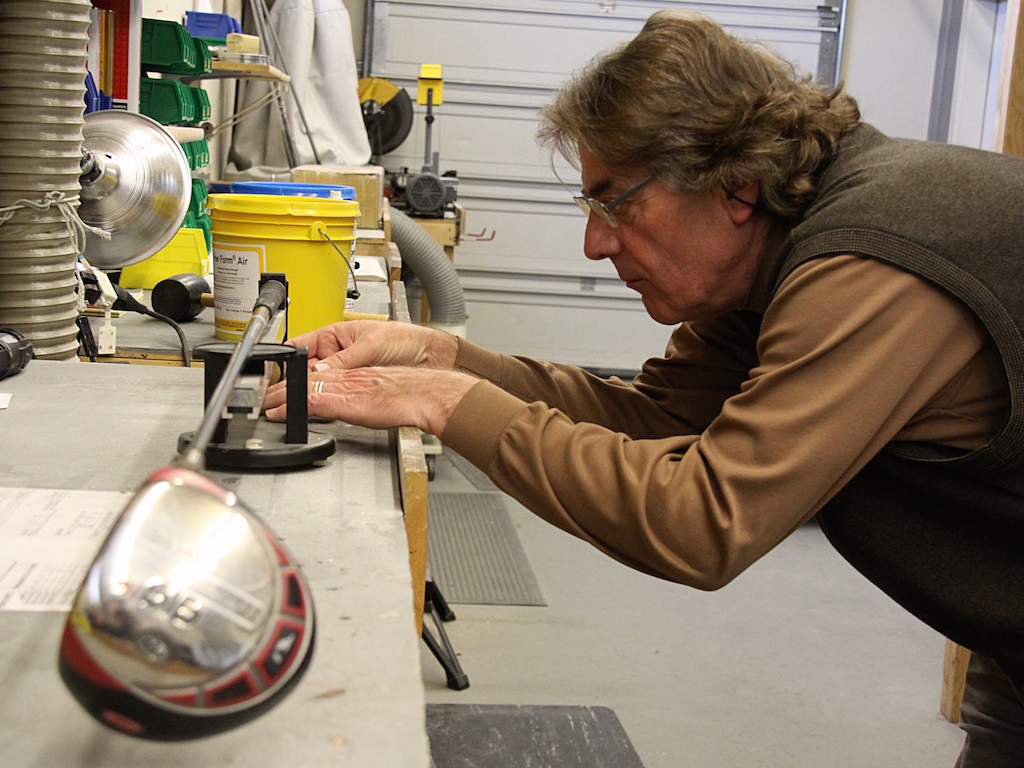
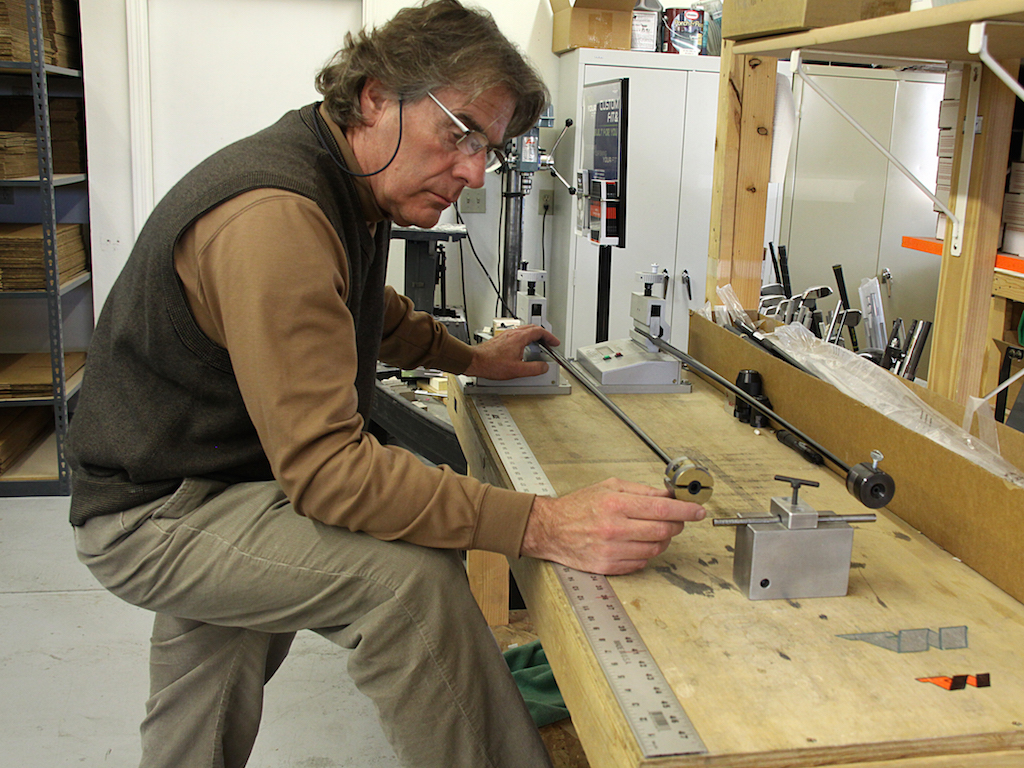
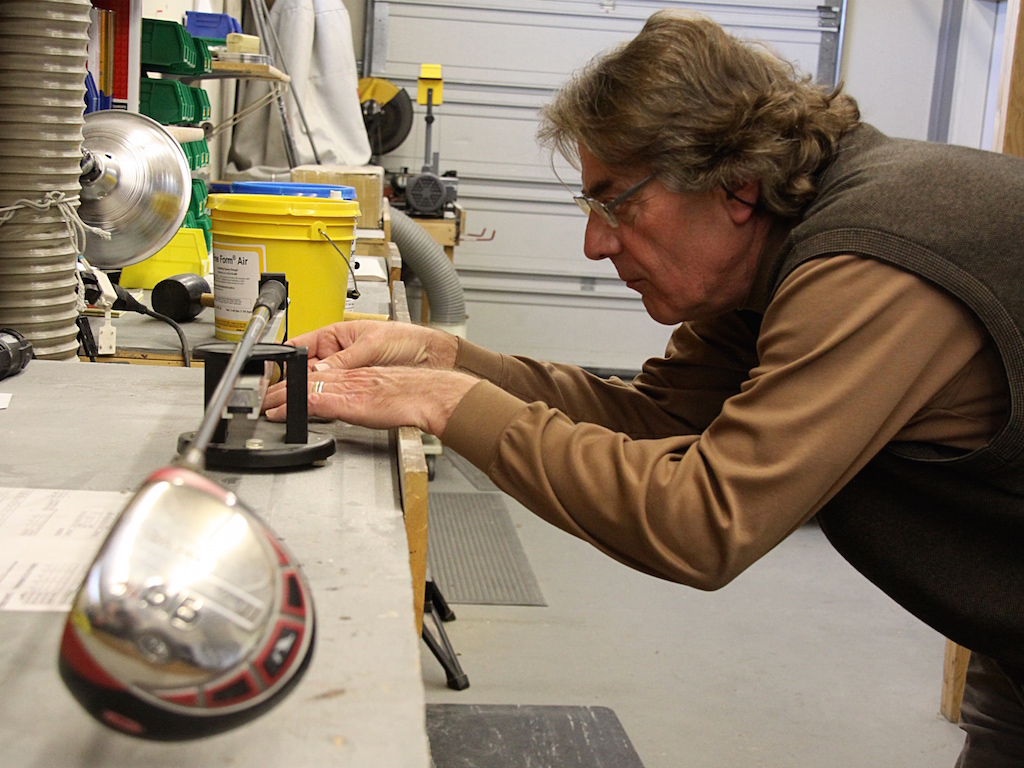
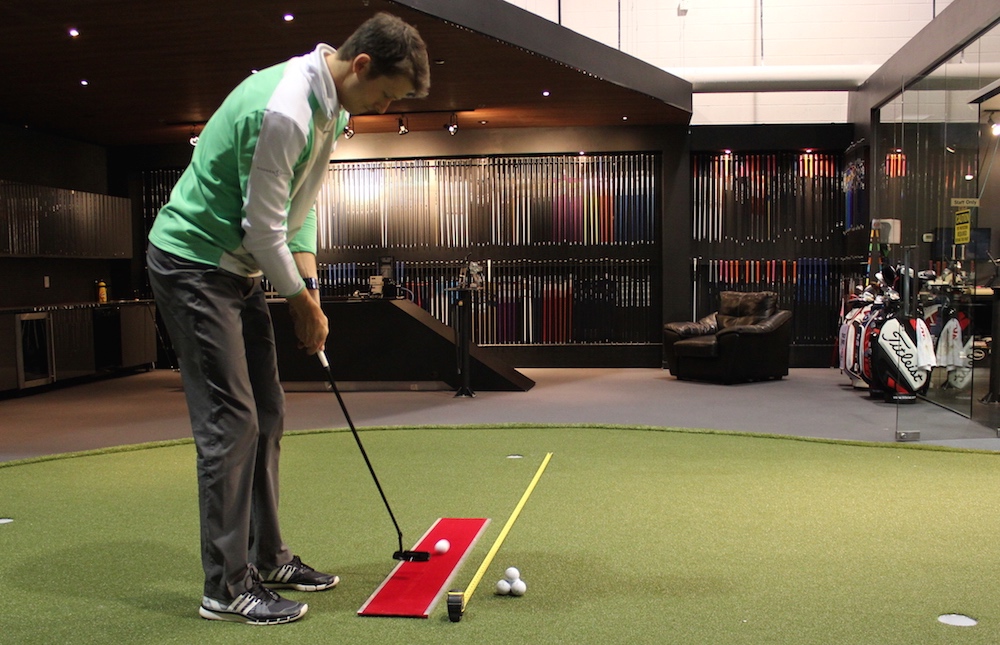
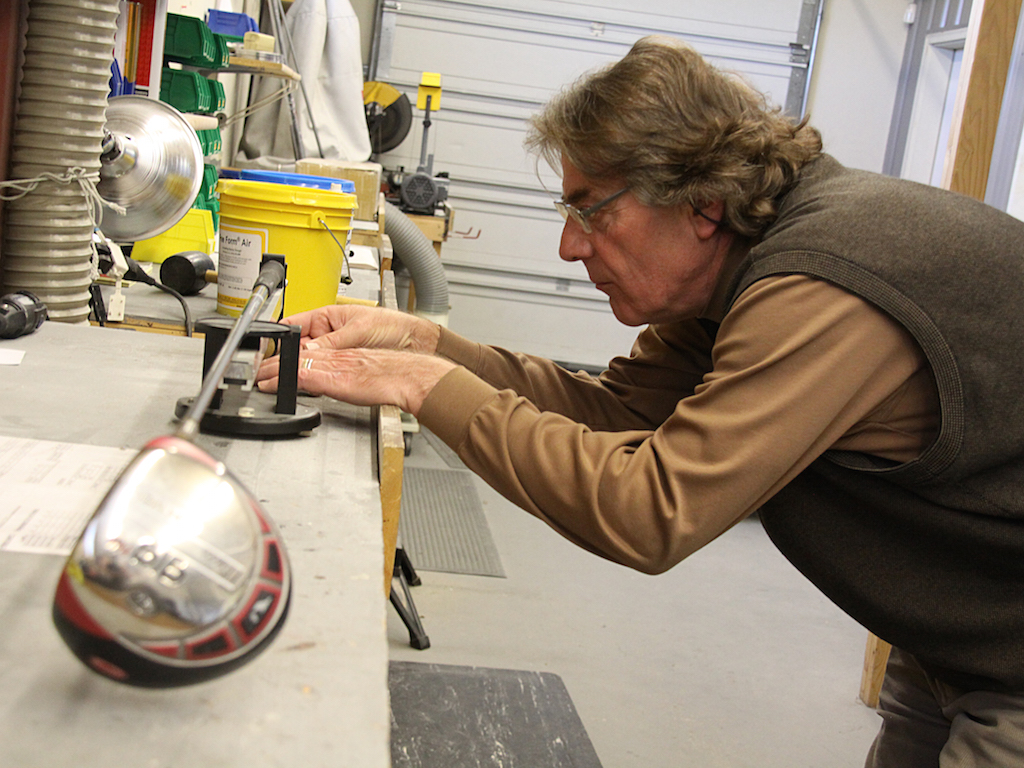








Pingback: Bending Lie Angle With Cleveland RTX Wedges: Optimizing Your Golf Game – Graphics Cards Advisor
Lee
May 20, 2016 at 4:46 am
TOM –
“We’re working on that in terms of a face label with gradation lines printed on the label in degree increments so you could put the label on the face, hit the ball with the vertical ink line, see the transfer of the line to the label and then know the lie change based on which degree line on the label is parallel to the ink line.”
Just wondering if these are available to the market yet? I could use some for testing the lie of my new Wishon 771 irons! Hit the course today with some fairly inconsistent results, and felt I was getting a number of toe/ground hits in spite of my custom fitting by a top professional club-fitter. We did the final fitting off of a black board, not the method you describe here.
gerry caradonna
Mar 28, 2016 at 1:10 am
Anyone know of a good club fitter in palm beach FL. to get my loft and lie angle checked i went to Dicks sporting goods seems like they just dont have the time or dont care just try to rush you
Phil
Jul 13, 2015 at 11:10 am
I have the utmost respect for Tom and true gratitude for sharing his sage knowledge here. As a golfer who recently purchased some club building / adjusting equipment out of frustration with big box golf store workmanship (hard to blame them with the prices they offer & volume they must process daily) I was pleased to read this article. Since day one of becoming a golfer it was clear to me that hitting off a lie board was not a quality fit and this has always stuck in the back of my mind. The board sits above the stance for one, the golfer is adjusting the swing to ‘pick the ball’, they can easily hit it slightly fat deflect head first and slide that angle into the ball etc. etc. Hitting off grass into a marked ball is such a simple solution – the only way to go.
That said…. and I know the focus is on strictly on fitting here… The vast majority of golfers often have too upright a swing to begin with and end up on their toes displaying less than great leg/foot work – again, I know this is an issue the fitter is not responsible for. Still, having either standard or purposely flat lies teaches / requires more engagement of the lower body and foot work for these golfers to achieve a desired ball flight. It wouldn’t be outside the club builders / fitters arena to recommend, fit, build a couple of ‘practice clubs’ designed for this intent. It also wouldn’t be wrong if the fitter, seeing egregious ott etc. issues, offers the golfer the option to shave a degree with the understanding that golfer is taking lessons. Just my 2 cents, maybe I’m missing some points, regardless I’m really glad to learn about this fitting technique – Thanks!
Pingback: A Visual Effect of Lie Angle • Green Lantern Golf
Dave
Feb 28, 2015 at 7:44 pm
Tom,
This posting just came in to me and I can say it is timely. I fit a player today in the Weathers Facility here at IU using the sharpie method. He came to me asking about the differences between the lie board and the sharpie method. I had previously fit a pair of Vokey wedges to 2*upright which is what his swing calls for. After the fitting of all the clubs we found that most of the special order clubs were -1.5* from his needed specs. Bending them upright put his swing plane and impact right on spec for him. I suspect that I could have used the lie board and gotten to the same place with this player, but the line on the face of the irons and the change from perpendicular to the score lines, was easy enough for him to see and be convinced of the need for a change.
Mat
Feb 2, 2015 at 5:39 pm
Just a sidenote – some manufacturers go 0.5º between irons, and others 0.75º. Thus, one brand to another can cause a degree difference at the longest and shortest irons…
Dave S
Jan 29, 2015 at 1:28 pm
Edit: I know i can get them adjusted for pretty cheap at a local Golfsmith ($5 per club), but that would require me to know exactly how to bend them. I guess what I’m really asking is whether there’s a cheap way to have my dynamic lie tested?
Tom Wishon
Jan 29, 2015 at 4:01 pm
In all honesty, to get this done right so you have no doubt, you need to find a good, experienced clubmaker in your area who can both do the dynamic lie fitting test to tell him exactly how much to bend each iron so it is right for your swing, and then to do the bends as determined. You can try to ask the person at GS if they also can put you through a dynamic lie fitting test, if they know how to do that and could do that for you. I don’t know if retail stores like this can do that or would do it.
To find a good clubmaker, I would advise you head to the websites of the AGCP (Association of Golf Clubfitting Professionals) and the ICG (International Clubmakers’ Guild) and use their search tools to see if there is a clubmaker in reasonable proximity to your location. Google them and you’ll find their sites and on their sites you can find their locator search tool. The bending is only half of the task – you need someone competent in conducting a proper dynamic lie fitting test which tells how much each of your irons needs to be bent to fit you.
Nick
Jan 29, 2015 at 10:57 pm
Dave – Golfsmith does an above average job of training its fitters and techs. While a certified club builder is preferable, they should be able to do a good job for you.
I recommend printing out the specs of your irons and measuring the lie angle of the clubs you’re testing to get the best results. You need to establish a base line because clubs are not always built exactly to spec and/or lie angles can change a bit over time with use.
Dave S
Jan 29, 2015 at 11:30 am
Is there a way to get the lie adjusted on my irons for relatively cheap?
Erich
Jan 29, 2015 at 8:54 am
I swing a few degrees left so I need some toe down or I will pull the ball to the left. Your lie needs to start the ball on your target line, it doesn’t have to be perfect by robot standards. In the wedges if they are fit for my full swing then I will definitely pull my wedges since I play 2* upright. I must play flatter wedges so I don’t pull pitches and dig the heel in on short shots since my hands aren’t as high at impact. His information is great but nothing new.
Ryan
Jan 28, 2015 at 9:55 pm
Hi Tom,
I was just wondering why the lie angle should be the last thing checked in a fitting. I was taught that checking for lie angle was one of the first things that you do and I’ve done all my fittings that way. I have always used the dry erase marker method and I double check the angle at the end of each fitting. I made the assumption that once you found a lie angle that worked, you had a pretty good idea what lie angle to try on all the clubs.I was just hoping you could shed some light as to why you do it last. Thanks!
Tom Wishon
Jan 29, 2015 at 10:37 am
RYAN
We recommend doing the lie test and final lie adjustment after everything else is determined in the fitting because that way it takes everything into account that could affect the dynamic lie results in the lie fitting. Shaft droop – if you are being lie tested with the right fit club for you, it then takes the flex/bend profile, headweight effect on shaft bending, length effect on shaft bending all into account to reveal what your best lie will be for YOUR custom fit clubs. If you test with a club that has a different shaft flex/bend profile, length, headweight then the results you see could be different than the results you would see with the golfer’s final fit clubs. Do understand we are talking smaller details here but doing it this way just to be 100% sure the dynamic lie is as accurate as it can be for the golfer with his final fit in the clubs. Usually if you do your dynamic lie test with an iron that is of the same length and close enough in shaft and swingweight, that will typically be good enough.
Jeff
Jan 28, 2015 at 5:42 pm
So bored with this guy.
Golfrnut
Jan 28, 2015 at 6:24 pm
Guys around here are probably much more tired of the trolling comments from people like yourself than getting useful information from people like Tom. When you have something to bring to the table, then speak, otherwise you can just climb back down in the hole that you came from.
JC
Jan 28, 2015 at 6:28 pm
I know right. Darn him for taking time out of his day to write articles that could help people play better golf! SMH
Mark
Jan 28, 2015 at 4:45 pm
Is there a “rule of thumb” regarding how far the lie angle needs to be adjusted based on how far from vertical the line on the club face diverges? Is it a 1:1 relationship? (1 degree off from vertical means that you will have to adjust the club 1 degree).
Tom Wishon
Jan 29, 2015 at 10:45 am
MARK:
We’re working on that in terms of a face label with gradation lines printed on the label in degree increments so you could put the label on the face, hit the ball with the vertical ink line, see the transfer of the line to the label and then know the lie change based on which degree line on the label is parallel to the ink line. It’s simple geometry and really, one could do this with a protractor on the face to get pretty close because it is a 1:1 relationship in degrees off vertical on the face. But the labels will make it easier to do (as long as you get the label on the face correctly !!! – HA, there’s always a kicker, right?!!)
Be aware that by no means is this ink line method ours or anyone’s current discovery. It was first brought out by a very nice man and pioneer in repair and clubmaking by the name of Bud Blankenship for his former company in the 80s/90s called GolfTek in Idaho. Bud passed away unfortunately some years ago and never got the credit he deserved for some of the innovative things he contributed to the earlier days of clubfitting. He was a good friend of many in the industry from back then and it is right to give credit where credit is due on this.
Albatross85
Jan 28, 2015 at 3:47 pm
Dry erase marker works best and leaves nothing permanent
Nick
Jan 28, 2015 at 1:53 pm
I have been using the sharpie method in my fittings for several years. My only caution is that you must be extra careful to get the line on the ball as close to vertical as possible – otherwise your results will be inaccurate of inconsistent.
Lie angle does play a role in where we strike the ball on the face. As a general rule for irons, flattening the lie will move impact to the toe and bending the club more upright will move impact to the heel. In my experience, however, golfers have more success when the lie angle is adjusted to optimize turf interaction and other specs (shaft length, swing weight, stiffness, etc.) are adjusted to promote center face contact.
50jay
Jan 28, 2015 at 12:37 pm
Great Article!
I have a question for Tom:
My last lie fitting was done on a lie board and the result was 2*UP. I had them bent back then. Even though the lies are still 2*UP, my natural tendency would be to hit them on the toe side of the blade. When I had them checked again with a lie board it indicated me that I needed even more upright clubs.
Could it be that the lie board is giving me the wrong answer and that my lies are in fact too upright for me considering my clubs are at the proper length? I just want to understand the logic behind all of this.
Thank you Tom, your input is greatly appreciated on this site!
(I will perform the ink test as soon as possible.)
Kelly
Jan 28, 2015 at 7:55 pm
This is similar to my fittings. One of my swing flaws is that I will come in with high hands. In addition to high hands I have a swing speed on the higher side. Using a lie board I’be been fit or maroon dot Pings before. I’ve also been fit for a very tip stiff shaft with very upright clubs before. Truthfully I was never comfortable with these clubs from a looks and shaft flex standpoint. I decided that I would rather feel better about the other factors than be to concerned about what the lie board showed. I do plan on trying the ink line as a test.
Thanks to Tom for another informative article.
Tom Wishon
Jan 29, 2015 at 4:05 pm
50jay
What you report is precisely why the astute fitters are switching away from lie boards to use the ink line method. Somewhere on YOU TUBE is a slo mo video that captures exactly the weird anomaly that can cause a lie board test to result in an errant toe side impact on the sole. Fascinating video. It shows that right when the face hits the ball before the sole touches the board/ground, the reaction of the head right at impact is to cause the toe to tilt down more, which is what puts the toe end of the sole on the board. So my bet is that’s what’s happening with your more upright readings. You will know for sure if you do the ink line test.
Mike
Jan 28, 2015 at 12:24 pm
Great stuff Tom! Is there any correlation between heel/toe contact and lie angle? Thanks!
Tom Wishon
Jan 29, 2015 at 10:56 am
MIKE
Not 100% sure what you are asking for sure but it is true that if sole contact is on the heel or toe side, then for sure this is a basic indicator that whatever the lies of your irons are now is not what they need to be to allow the sole to travel level to the ground through impact. The old way of dynamic lie fitting involving the lie board would always teach that for each 1/4″ that the center of the sole impact mark with the lie board was off from the very center of the sole, that represented a 1* change. So for example if the average/consistent center of the sole rub mark was 1/1″ on the heel side of face center, that indicated a 2* flatter lie bend to the iron and vice versa for upright if the center of the sole rub mark was 1/2″ toward the toe side of sole center. Hope this hit what you were asking about.
Bb
Jan 28, 2015 at 11:52 am
Great article . Bad clubs , over priced
Clubs have no meat to them
Ted
Jan 28, 2015 at 11:43 am
I’ve did this type of lie angle testing after reading about Tom’s method. It works, its easy, and can be done for the price of a Sharpie.
Max
Jan 28, 2015 at 11:37 am
Tom posted this info in one of the forums a few years ago and I tried it and found my irons were too upright. So easy to test and I no longer hook my short irons now that the lies have been adjusted accordingly. Definitely try this if you hook your short irons or hit them left a lot.
Awedge333
Jan 28, 2015 at 5:54 pm
OK, my long clubs trend right – shout clubs trend left. 7-8 irons go straight…..
What does this mean???
Awedge333
Jan 28, 2015 at 5:56 pm
Sorry, short not shout….. that only comes after impact!
Tom Wishon
Jan 29, 2015 at 10:52 am
AWedge
This could be a situation in which you come into impact in a little different posture/spine angle/hands position with each of the different segments of your iron set. That’s pretty common because the lengths and total weights of our irons are all different from each other so with some golfers it very much can affect their position at impact which then affects the lie position of the clubhead through impact. How to resolve this is to do the dynamic lie test with each and every one of the clubs, and not to do it as most do which is to dyn lie test one iron only and then extrapolate all the other lies in 1* increments from that one test iron.
Clubfitters who do an every club lie test almost always find that when it is all done and they look at the actual final lie measurements for every iron, the lies won’t go in a nice 1* increment from club to club. Yes, this takes a lot longer to do. But in a case such as what you describe in your irons, it becomes the best way to try to resolve what you are seeing.
If after doing this you still find right/left results with different segments of the set then the place to investigate will be, 1) are the lengths absolutely right for you, your height/wrist to floor, your tempo/transition, ability, 2) are the swingweights and total weights of the irons right for you and your tempo/transition, sense of feel for your timing and rhythm in the swing.